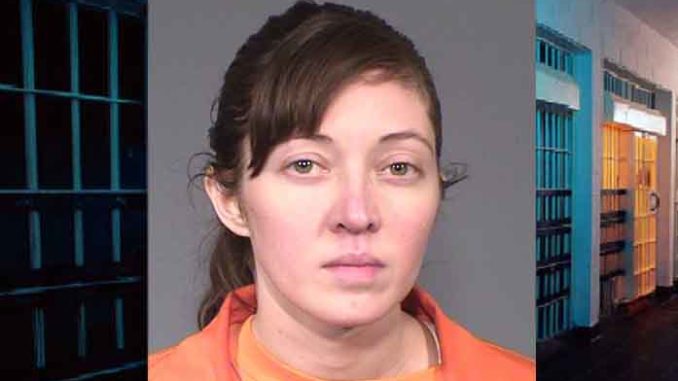
The Arizona Court of Appeals agreed last week with a Cochise County judge who ruled a Sierra Vista woman twice convicted of fatally stabbing her daughter’s father waited too long to seek DNA testing of hair found in the dead man’s hands, and that the test results would not have changed the jury’s verdict.
Ajelina “AJ” Roth Lewis is serving a 16-year sentence after being found guilty in the death of William Palmer, whose body was found on the carpeted floor of his bedroom on March 12, 2010. Palmer had been stabbed nearly 25 times.
Clenched in Palmer’s hands were three strands of long dark hair. Lewis, who was in the apartment the night before, had long dark hair, as did Palmer’s former girlfriend.
A jury convicted Lewis of first-degree murder in 2011 but she was later granted a retrial. A second jury trial in 2014 resulted in a conviction for second-degree murder and a prison stay until 2029.
The Cochise County Attorney’s Office did not pursue forensic or DNA testing of the hair strands for either trial. Some other crime scene evidence was also not tested because the prosecutor did not intend to present those items to the jury. Nothing precluded the defense from testing the items.
In 2016, Lewis began pushing for the crime scene evidence to be tested to determine who “the real” murderer was. Then in 2018, the judge who presided over both of Lewis’ trials ordered Cochise County to pay nearly $8,000 for analysis of several untested items of evidence, including the hair.
In mid-2019, those tests revealed one of the three strands matched Lewis’ DNA but two did not. Lewis argued that the newly obtained test results would have likely altered the jury’s verdict and she requested an evidentiary hearing at which she could argue for a new trial.
But last November, Cochise County Pro Tempore Judge Terry Bannon ruled Lewis was not entitled to an evidentiary hearing. The judge noted the test results “would probably not have altered the jury’s verdict” and the DNA issue did not represent “newly discovered evidence” as required under court rules.
“The hairs and the mitochondrial DNA testing procedures were available before her trial in 2011 and before her trial in 2014 and could have been raised as part of her defense at any time at either trial,” Bannon wrote in her order. “That the State did not present the hairs as evidence in its case in chief did not preclude the defendant from presenting them in her defense at either, or both trials.”
In December, Lewis asked the Arizona Court of Appeals to review Bannon’s ruling. But on June 23, the appellate judges denied Lewis relief, noting in a 3-0 decision that they found no fault with Bannon’s findings.
“The trial court clearly identified Lewis’ claims and correctly resolved them on their merits,” the appellate judges ruled. “Because that analysis is thorough and well-reasoned, we adopt it.”
Harriett Levitt, Lewis’ court-appointed appellate attorney, has until July 8 to ask the court of appeals to reconsider their decision. An alternative is for Lewis to file a petition for review to the Arizona Supreme Court by July 23.
Court records show Lewis told police Palmer was alive when she fled his apartment after an unknown man appeared in the doorway of the bedroom. She did not notify authorities of concerns for Palmer’s safety until several hours later which led to the discovery of the body.
Detectives who interviewed Lewis noted it appeared she had taken a shower before coming to the police station. One of her cell phones was also missing.
When she first pushed for the DNA testing, Lewis contended Palmer’s killer may have been Theodore Ramos, who fatally stabbed an elderly Sierra Vista man in 2011. None of the newly tested evidence matched Ramos.
To date, no one has sought to match the two unidentified strands of hair to Palmer’s former girlfriend, who reportedly had an ironclad alibi for the time of the murder.
Several of the stab wounds were in the area of a tattoo Palmer had of his daughter’s birthdate. The murder weapon and Lewis’ missing cell phone were never recovered.
